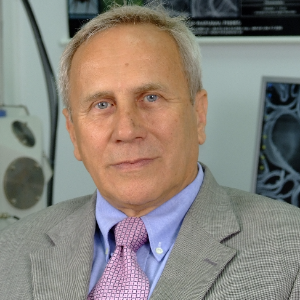Title : Flax and hemp and their role in medicine and phytotherapy – The latest achievements
Abstract:
Flax seeds are rich in valuable fatty acids, amino acids, cyclolinopeptides, lecithin, phytoestrogens, lignin, waxes, pectin, and health-promoting mucilages, as well as Ω-3 and Ω-6 polyunsaturated fatty acids (PUFAs), which are effective in preventing cardiovascular disease. Flaxseed mucilages are recommended for the treatment of diseases of the gastrointestinal tract, skin and throat due to their laxative, protective, and softening effects on intestinal contents. Flaxseed lignans, a class of phytoestrogens, have beneficial effects on the treatment of hormone-dependent diseases, and have been studied for their anti-cancer, antioxidant and antimicrobial properties. Hemp, an extraordinarily useful crop, yielding 10 tons of dry matter per hectare and more, absorbs about 2.5- 5.0 tons of CO2 from the air, and from the soil it absorbs about 70 g of Pb, 160 Cu, up to 7 g of Cd per hectare, contributing significantly to the protection of our degraded environment. Interest in bast flax and hemp fibres is also growing significantly, due to the production of a wide range of industrial products such as nonwoven fabrics, geotextiles, paper, and biodegradable composite packaging products. Flax and hemp seed cake, a byproduct of cold-pressing seed oil, is also used as a sustainable source of food, nutraceuticals and pharmaceuticals. Between 2000 and 2005, the Institute of Natural Fibres in Poznan launched the production of a flaxseed pharmaceutical preparation called BIOFLAX®. This product was introduced to the Polish and European pharmaceutical market, and contained, among other things, 70% more mucilaginous substances than other preparations, about 10% unsaturated fatty acids, and was recommended for the treatment of duodenal, stomach and intestinal ulcers, and metabolism. They are also used in the production of fodder for fowl and livestock, enriching to higher quality milk, eggs and meat with valuable unsaturated fatty acids. They are also an excellent raw material for obtaining phenolic compounds, especially extracts rich in lignans. Flaxseed dietary fibre, contains soluble fibre, which easily ferments in the colon, releasing gases and by-products, and insoluble fibre. An excellent composition rich in essential amino acids, unsaturated fatty acids and the aforementioned fibre, it also has a positive effect on the growth and shine of hair and nails. These aforementioned valuable ingredients are included in many cosmetics, nutraceuticals and functional foods. In health-promoting applications, terpenoids and cannabinoids are used in medicine, cosmetics, food products, aromatherapy, plant protection, and can be extracted with steam, using CO2 - so-called supercritical extraction - extraction with supercritical CO2 and also butane. Recently, there are also methods of non-damaging the structure of volatiles using liquid nitrogen for this purpose. More than 104 diverse groups of compounds like CBG, CBC, CBD, Δ9-THC, Δ8-THC, CBL, CBE, CBN, CBND, CBDT, and a group of terpene compounds have been recognized in Cannabis Sativa L., for a total of about 550 compounds. In the past two years, the US Food and Drug Administration released Epidiolex, a strawberry-flavored syrup containing cannabidiol, an active analgesic and cardiac agent, as the main CBD ingredient (a product of GW Pharmaceuticals), for the US and European markets.




